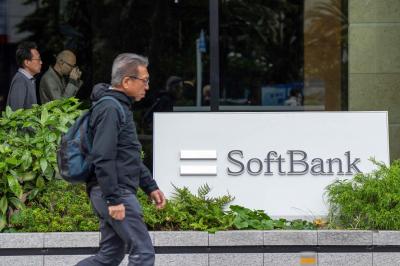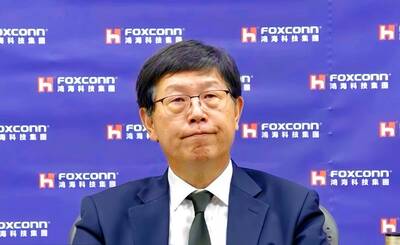The government has convinced banks to help bail out large companies that do not cut personnel during a certain timeframe with loans at preferential interest rates, Minister of Finance Lee Sush-der (李述德) said yesterday.
Lee said banks would provide as much as NT$600 billion (US$28.1 billion) for the bailout, an agreement reached between the Ministry of Finance and the Bankers Association of the Republic of China (銀行公會) on Wednesday stipulated.
“In the face of the global financial crisis, there is no lack of money in the country, but we do need to increase liquidity,” Lee said at a press conference following the weekly Cabinet meeting, where he briefed Premier Liu Chao-shiuan (劉兆玄) on the bailout plan.
“Money is not a problem,” Lee said. “Total savings in financial institutions amounts to more than NT$20 trillion, while total loans are between NT$17 and NT$18 trillion.”
Companies qualifying for the bailout plan are in the manufacturing, construction, mining, and quarry sectors with capital of more than NT$80 million or more than 200 employees, and other businesses with an annual turnover of more than NT$100 million or with more than 50 employees.
Under the plan, a business would be granted a loan at a lower interest rate on condition that it does not reduce staff during the loan period.
Businesses could obtain a medium and short-term working capital loan of as much as NT$60 million, while capital investment loans would be capped at NT$200 million.
The plan, which came into force yesterday, will last until the end of 2010.
In related news, the Cabinet approved an amendment to the Act for Promotion of Private Participation in Infrastructure Projects (促進民間參與公共建設法) that grants tax allowances to private businesses involved in telecommunications infrastructure.
Meanwhile, Executive Yuan Spokeswoman Vanessa Shih (史亞平) quoted Premier Liu Chao-shiuan (劉兆玄) as saying at the Cabinet meeting that all government agencies should expand short-term job creation by using a NT$3.1 billion budget to be spent by the end of this year and NT$6 billion earmarked for the same purpose next year.
Council for Economic Planning and Development briefed the Cabinet yesterday on how many jobs had been created so far. No numbers were released to the media, but the Cabinet hoped the employment plan, which came into effect on Nov.1, would create 46,000 jobs this year and 56,000 next year.

Japanese technology giant Softbank Group Corp said Tuesday it has sold its stake in Nvidia Corp, raising US$5.8 billion to pour into other investments. It also reported its profit nearly tripled in the first half of this fiscal year from a year earlier. Tokyo-based Softbank said it sold the stake in Silicon Vally-based Nvidia last month, a move that reflects its shift in focus to OpenAI, owner of the artificial intelligence (AI) chatbot ChatGPT. Softbank reported its profit in the April-to-September period soared to about 2.5 trillion yen (about US$13 billion). Its sales for the six month period rose 7.7 percent year-on-year

CRESTING WAVE: Companies are still buying in, but the shivers in the market could be the first signs that the AI wave has peaked and the collapse is upon the world Taiwan Semiconductor Manufacturing Co (TSMC, 台積電) yesterday reported a new monthly record of NT$367.47 billion (US$11.85 billion) in consolidated sales for last month thanks to global demand for artificial intelligence (AI) applications. Last month’s figure represented 16.9 percent annual growth, the slowest pace since February last year. On a monthly basis, sales rose 11 percent. Cumulative sales in the first 10 months of the year grew 33.8 percent year-on-year to NT$3.13 trillion, a record for the same period in the company’s history. However, the slowing growth in monthly sales last month highlights uncertainty over the sustainability of the AI boom even as

AI BOOST: Next year, the cloud and networking product business is expected to remain a key revenue pillar for the company, Hon Hai chairman Young Liu said Manufacturing giant Hon Hai Precision Industry Co (鴻海精密) yesterday posted its best third-quarter profit in the company’s history, backed by strong demand for artificial intelligence (AI) servers. Net profit expanded 17 percent annually to NT$57.67 billion (US$1.86 billion) from NT$44.36 billion, the company said. On a quarterly basis, net profit soared 30 percent from NT$44.36 billion, it said. Hon Hai, which is Apple Inc’s primary iPhone assembler and makes servers powered by Nvidia Corp’s AI accelerators, said earnings per share expanded to NT$4.15 from NT$3.55 a year earlier and NT$3.19 in the second quarter. Gross margin improved to 6.35 percent,

FAULTs BELOW: Asia is particularly susceptible to anything unfortunate happening to the AI industry, with tech companies hugely responsible for its market strength The sudden slump in Asia’s technology shares last week has jolted investors, serving as a stark reminder that the world-beating rally in artificial intelligence (AI) and semiconductor stocks might be nearing a short-term crest. The region’s sharpest decline since April — triggered by a tech-led sell-off on Wall Street — has refocused attention on cracks beneath the surface: the rally’s narrow breadth, heavy reliance on retail traders, and growing uncertainty around the timing of US Federal Reserve interest-rate cuts. Last week’s “sell-off is a reminder that Asia’s market structure is just more vulnerable,” Saxo Markets chief investment strategist Charu Chanana said in